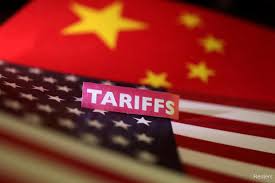
Top economic officials from the United States and China are set to reconvene in Stockholm this week, aiming to secure another 90-day extension of their temporary tariff ceasefire. With an August 12 deadline looming, both sides hope to avoid the abrupt reinstatement of duties that could upend global supply chains and derail high‑level diplomatic overtures later this year. While negotiators do not expect sweeping breakthroughs, they are focused on maintaining the fragile détente and laying groundwork for deeper discussions on core grievances that have fueled the two‑year trade dispute.
Negotiators Focus on Truce Extension and Timing
The Stockholm talks will bring together senior representatives from the U.S. Treasury Department and China’s Ministry of Commerce, along with technical experts on export controls and sectoral tariffs. Under the existing agreement, both sides suspended plans to impose new duties and refrain from escalating export restrictions for a three‑month window. Absent a timely extension, U.S. levies could snap back to marked‑up levels—up to 25 percent on a broad range of imports—and China could reinstate its own retaliatory measures.
Delegations are expected to confirm another 90‑day pause, pushing the truce into mid-November, just ahead of a potential summit between President Trump and President Xi Jinping. U.S. officials have signaled that agreeing to an extension would demonstrate goodwill and provide the necessary breathing room to hammer out more substantive arrangements on state subsidies, intellectual property protections, and access to China’s digital economy. Chinese delegates, for their part, will press for parallel easing of export controls on semiconductors, rare earth minerals, and advanced machinery—areas where U.S. curbs have intensified in recent months.
Underlying Disputes Remain on the Table
Although tariff levels are front and center, negotiators recognize that the underlying economic disagreements will require months of technical work. Washington continues to challenge Beijing’s state‑led industrial policies, which it views as unfairly bolstering Chinese firms through subsidies and preferential financing. Beijing, in turn, objects to U.S. export controls on cutting‑edge chips and telecommunications equipment, arguing they are being wielded as tools of economic containment rather than legitimate national security measures.
Industry analysts warn that without parallel progress on these deeper issues, the ceasefire remains inherently unstable. “The tariff truce is a necessary but not sufficient step,” notes one trade consultant in Washington. “Both sides need a roadmap for substantive reforms if they hope to avoid falling back into tit‑for‑tat escalation once the extension expires.” To that end, working groups on digital trade, clean energy technologies, and state-owned enterprise reform are slated to convene in Beijing and Washington over the coming weeks.
Potential Impacts on Global Markets
Financial markets have been closely monitoring the Stockholm talks. A failure to extend the truce could see significant volatility in currency and commodity markets as companies scramble to hedge against renewed duties. Conversely, even a modest agreement to prolong tariff suspensions tends to ease investor anxiety, boosting regional equity indices and tempering the dollar’s strength.
Supply‑chain managers across sectors—from automotive to consumer electronics—are watching for clarity on critical inputs such as rare earth elements and advanced semiconductors. These materials underpin products ranging from electric vehicles to 5G infrastructure. Any signals that Beijing and Washington are willing to negotiate more permanent arrangements on export licensing for these goods would be welcomed by global manufacturers still reeling from previous rounds of restrictions.
Agricultural exporters in the Midwest are also keenly interested in the outcome. Under earlier truce agreements, China made preliminary pledges to increase purchases of American corn, soybeans, and meat products. However, actual deliveries have lagged, and U.S. farm groups see the Stockholm talks as an opportunity to secure firmer commitments ahead of the autumn planting season.
Looking Ahead to Leaders’ Summit
Beyond the immediate goal of extending the 90‑day tariff pause, Stockholm is the opening act in a broader diplomatic effort designed to pave the way for a presidential meeting. While no date has been officially confirmed, both sides have indicated that a Trump‑Xi summit could occur in late October or early November—timed to coincide with major international gatherings. A successful summit would aim to upgrade the temporary truce into a longer‑term framework, potentially encompassing new market‑access commitments, streamlined regulatory cooperation, and joint initiatives in emerging sectors like clean energy and artificial intelligence.
Officials caution, however, that any high‑profile meeting will be contingent on substantive progress in the coming weeks. “A heads‑of‑state dialogue without deliverables risks undercutting credibility on both sides,” says a former U.S. trade negotiator. To avoid that pitfall, teams in Stockholm must at least agree to a firm extension of tariff suspensions and establish concrete timelines for addressing the structural issues that lie at the heart of the dispute.
As the world’s two largest economies prepare to reconvene at the Swedish capital, business leaders and governments alike are watching closely. The outcome will not only determine the next quarter’s trading environment but also shape the strategic economic relationship between Washington and Beijing for years to come.
(Source:www.marketscreener.com)
Negotiators Focus on Truce Extension and Timing
The Stockholm talks will bring together senior representatives from the U.S. Treasury Department and China’s Ministry of Commerce, along with technical experts on export controls and sectoral tariffs. Under the existing agreement, both sides suspended plans to impose new duties and refrain from escalating export restrictions for a three‑month window. Absent a timely extension, U.S. levies could snap back to marked‑up levels—up to 25 percent on a broad range of imports—and China could reinstate its own retaliatory measures.
Delegations are expected to confirm another 90‑day pause, pushing the truce into mid-November, just ahead of a potential summit between President Trump and President Xi Jinping. U.S. officials have signaled that agreeing to an extension would demonstrate goodwill and provide the necessary breathing room to hammer out more substantive arrangements on state subsidies, intellectual property protections, and access to China’s digital economy. Chinese delegates, for their part, will press for parallel easing of export controls on semiconductors, rare earth minerals, and advanced machinery—areas where U.S. curbs have intensified in recent months.
Underlying Disputes Remain on the Table
Although tariff levels are front and center, negotiators recognize that the underlying economic disagreements will require months of technical work. Washington continues to challenge Beijing’s state‑led industrial policies, which it views as unfairly bolstering Chinese firms through subsidies and preferential financing. Beijing, in turn, objects to U.S. export controls on cutting‑edge chips and telecommunications equipment, arguing they are being wielded as tools of economic containment rather than legitimate national security measures.
Industry analysts warn that without parallel progress on these deeper issues, the ceasefire remains inherently unstable. “The tariff truce is a necessary but not sufficient step,” notes one trade consultant in Washington. “Both sides need a roadmap for substantive reforms if they hope to avoid falling back into tit‑for‑tat escalation once the extension expires.” To that end, working groups on digital trade, clean energy technologies, and state-owned enterprise reform are slated to convene in Beijing and Washington over the coming weeks.
Potential Impacts on Global Markets
Financial markets have been closely monitoring the Stockholm talks. A failure to extend the truce could see significant volatility in currency and commodity markets as companies scramble to hedge against renewed duties. Conversely, even a modest agreement to prolong tariff suspensions tends to ease investor anxiety, boosting regional equity indices and tempering the dollar’s strength.
Supply‑chain managers across sectors—from automotive to consumer electronics—are watching for clarity on critical inputs such as rare earth elements and advanced semiconductors. These materials underpin products ranging from electric vehicles to 5G infrastructure. Any signals that Beijing and Washington are willing to negotiate more permanent arrangements on export licensing for these goods would be welcomed by global manufacturers still reeling from previous rounds of restrictions.
Agricultural exporters in the Midwest are also keenly interested in the outcome. Under earlier truce agreements, China made preliminary pledges to increase purchases of American corn, soybeans, and meat products. However, actual deliveries have lagged, and U.S. farm groups see the Stockholm talks as an opportunity to secure firmer commitments ahead of the autumn planting season.
Looking Ahead to Leaders’ Summit
Beyond the immediate goal of extending the 90‑day tariff pause, Stockholm is the opening act in a broader diplomatic effort designed to pave the way for a presidential meeting. While no date has been officially confirmed, both sides have indicated that a Trump‑Xi summit could occur in late October or early November—timed to coincide with major international gatherings. A successful summit would aim to upgrade the temporary truce into a longer‑term framework, potentially encompassing new market‑access commitments, streamlined regulatory cooperation, and joint initiatives in emerging sectors like clean energy and artificial intelligence.
Officials caution, however, that any high‑profile meeting will be contingent on substantive progress in the coming weeks. “A heads‑of‑state dialogue without deliverables risks undercutting credibility on both sides,” says a former U.S. trade negotiator. To avoid that pitfall, teams in Stockholm must at least agree to a firm extension of tariff suspensions and establish concrete timelines for addressing the structural issues that lie at the heart of the dispute.
As the world’s two largest economies prepare to reconvene at the Swedish capital, business leaders and governments alike are watching closely. The outcome will not only determine the next quarter’s trading environment but also shape the strategic economic relationship between Washington and Beijing for years to come.
(Source:www.marketscreener.com)





